11301 A LOUIS XIV WALNUT OS DE MOUTON CENTER TABLE MOUNTED WITH RARE PETIT POINT FLORAL NEEDLEWORK TOP AND VALANCE French. Second Half of the Seventeenth Century. Measurements: Height: 26 3/4″ (67.5 cm) Length: 36″ ( 91 cm) Depth: 25 1/2″ (65 cm).

Research
Of walnut, pine and chestnut. The detachable embroidered top with integral valance, which has a replaced gimp edge, has a floral bouquet within a basket at the center, surrounded by a composition of birds, insects and flowers. The base with plain frieze and D-molded lower edge rests upon four baluster turned supports resting upon ‘S’ scroll faceted legs. Each pair of legs united by three-way “S’ scroll stretchers. Some wear to edges. The pine plank top may be a very old replacement. Evidence of a frieze drawer once having been fitted.
Provenance:
Collection of Sylvie l’Hermite-King, Paris.
In early-17th century interiors, luxury was contained in the draperies and textiles, used in all aspects of the room to achieve the greatest feeling of intimacy and comfort.1 This included coverings for tables, like the one found on the present piece.
Two related tables are illustrated in Le XVIIe Siècle Français (Hachette, 1958, p. 54, nos. 4 and 6) (figures 1 and 2).
Initially these embroidered tapestries covered plain planks on trestles, however, the present table represents a slightly later and richer example evidenced by its carved walnut base. Its undulating stretchers and legs are characteristic of Louis XIII or XIV furniture and are known as os de mouton, or sheep’s bone, as the shape is traditionally said to resembles the bones of a lamb.

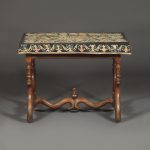

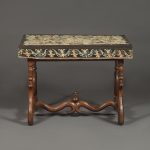


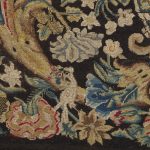
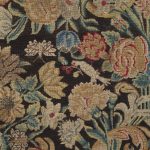
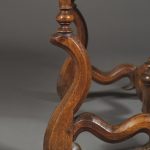
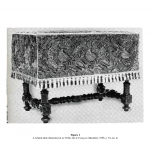
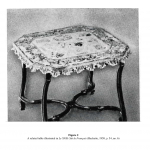
Comments are closed.